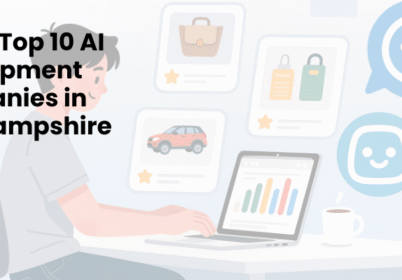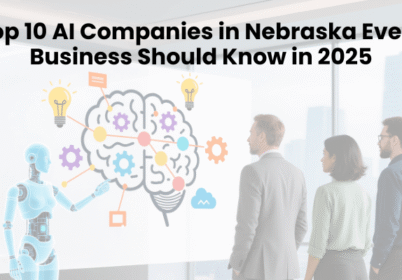How Playground AI Is Transforming Creative Workflows and Business Applications
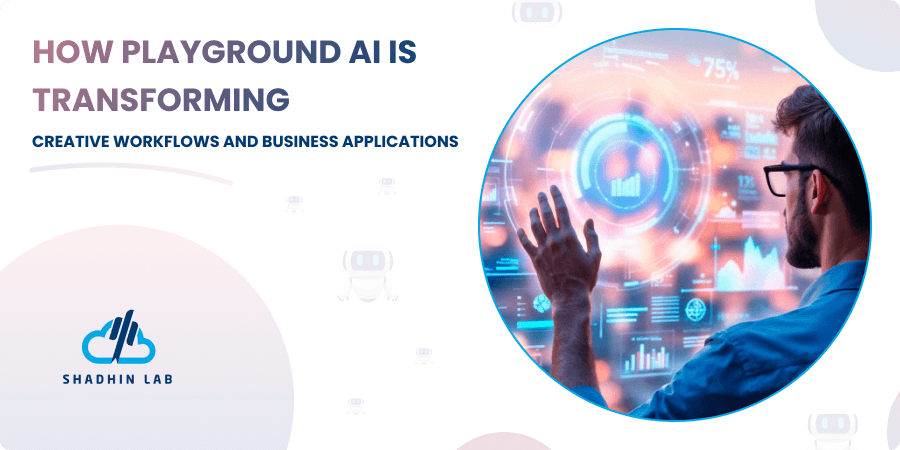
Table of Contents
AI image generation tools have become essential for designers, marketers, and content creators seeking fresh visual approaches. Playground AI offers a remarkably intuitive platform that makes creating stunning AI-generated visuals accessible to everyone, whether you are a beginner or an experienced artist. Learning how to use Playground AI can transform your creative workflow by saving time, inspiring new ideas, and enabling rapid experimentation without requiring extensive technical knowledge.
This guide explores how to use Playground AI effectively, covering everything from basic functionality to advanced techniques that help you unlock the platform’s full potential and elevate your creative projects to new heights.
Table of Contents
What is Playground AI?
Playground AI functions as a web-based creative platform that transforms text descriptions into vivid images using artificial intelligence. The service provides access to multiple cutting-edge image generation models including Stable Diffusion and DALL-E variants. Users simply enter descriptive text prompts that the AI interprets and converts into corresponding visual content. The platform balances sophisticated technology with an approachable interface suitable for beginners and seasoned professionals.
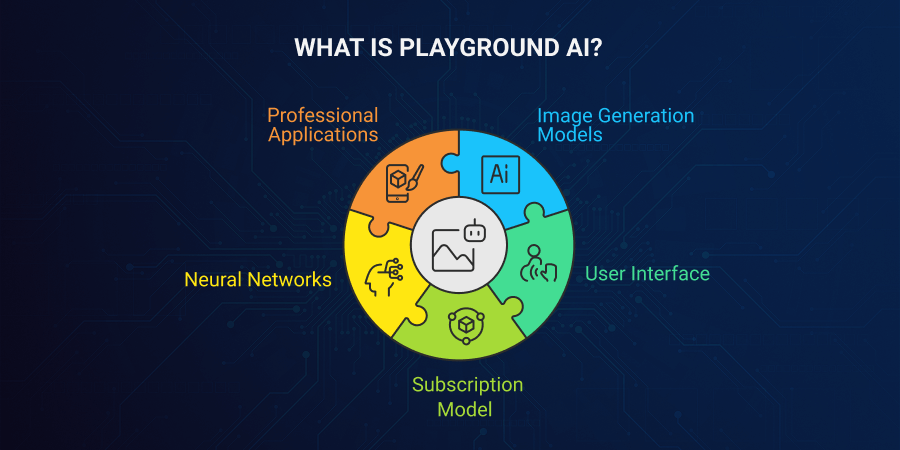
The service operates on a freemium model with both free and premium subscription options. Free users receive a limited daily allocation of generation credits, while subscribers enjoy expanded capabilities and higher usage limits. Playground AI processes text through complex neural networks trained on millions of diverse images to understand text-to-image relationships.
The system analyzes descriptive language and translates these concepts into visual elements with impressive precision and creative interpretation. Professional designers frequently use the platform for rapid concept visualization, while marketing teams create engaging social media assets. Content creators regularly generate unique illustrations for blogs, presentations, and digital publications without hiring illustrators.
The platform stands out through its straightforward interface that removes barriers typically associated with advanced AI tools. Users need no programming experience or technical background to produce professional-quality images. This accessibility has democratized creative capabilities that were previously available only to those with specialized design training.
Key Features of Playground AI
Playground AI delivers a robust feature set designed to maximize creative potential through artificial intelligence technology. Users gain access to multiple leading AI models, each offering distinct aesthetic qualities and generation styles. Different models excel at specific visual approaches, from photorealism to stylized illustrations and artistic interpretations.
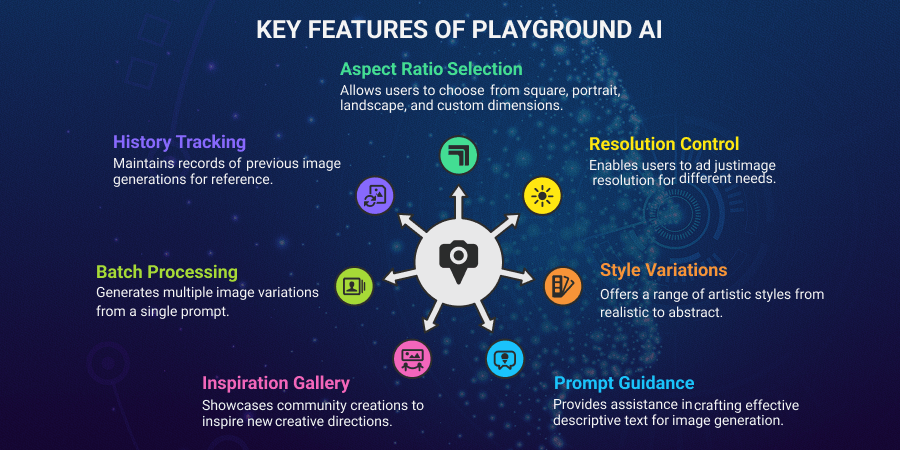
The clean, thoughtfully designed interface emphasizes usability while maintaining powerful creative controls beneath the surface. Even complete beginners can generate impressive images through simple text prompts without complicated settings. Experienced users benefit from granular adjustment options that provide precise control over the final output.
Key capabilities include:
- Customizable image parameters including aspect ratio selection, resolution control, and style variations
- Multiple format options supporting square, portrait, landscape, and custom dimensions
- Diverse artistic style options from hyperrealistic photography to abstract artistic interpretations
- Intelligent prompt guidance that helps users craft more effective descriptive text
- Inspiration gallery featuring community creations that spark new creative directions
- Batch processing functionality for generating multiple variations from a single prompt
- Comprehensive history tracking that maintains records of previous generations for reference
How to Use Playground AI: Step-by-Step Guide
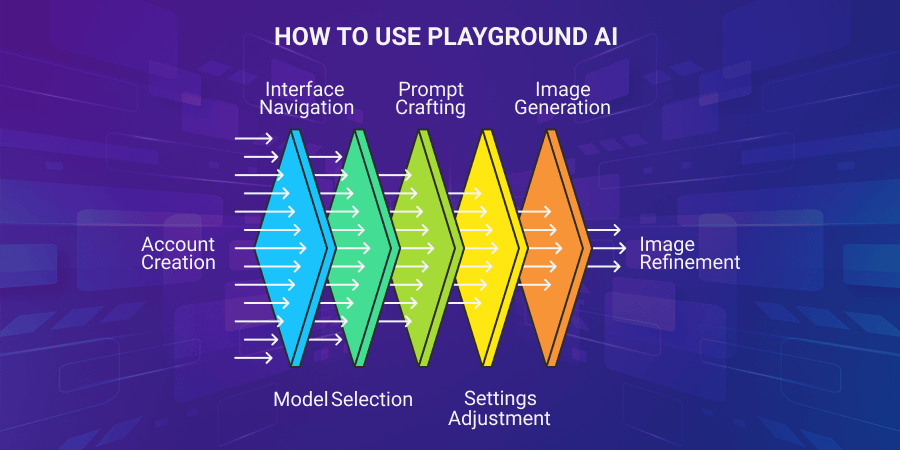
Creating Your Account
Start your journey with Playground AI by visiting the official website at playground.ai through your preferred browser. Locate the “Sign Up” button positioned in the top right corner of the homepage. Enter your email address and create a strong password that meets the security requirements. Social login options through Google or Apple accounts provide a faster alternative registration method.
Check your email inbox for the verification message containing a confirmation link from Playground AI. Complete your profile by adding a username that will identify your creations in the community gallery. Review the terms of service and privacy policy carefully before finalizing your new account setup.
Navigating the Interface
After successful login, take time to explore the main dashboard displaying recent community creations and featured examples. The navigation menu appears horizontally across the top with clearly labeled sections for different functions. Your primary workspace occupies the central screen area where generated images will display after creation.
Identify the model selection dropdown menu positioned prominently near the top of the workspace area. Locate the prompt input field directly below where you will enter your descriptive text. Explore the settings panel on the right side containing adjustable parameters for customizing your generations.
Selecting an AI Model
Expand the model dropdown menu to view the available AI image generators currently accessible on the platform. Common options typically include Stable Diffusion XL, DALL-E variants, and Midjourney-compatible models. Consider your specific visual requirements when choosing the appropriate model for your project. Photorealistic images generally achieve better results with newer models like SDXL.
Artistic illustrations might benefit from specialized models designed for creative stylization and interpretation. Different models demonstrate varying strengths with specific subject matter and visual approaches. Premium subscribers gain access to additional specialized models not available within the free membership tier.
Crafting Your Prompt
Enter your descriptive text in the prompt field positioned below the model selection area. Begin with clear, specific language that defines the subject, desired style, and overall mood. Include precise details about lighting conditions, perspective, and environmental context for more accurate results.
Use descriptive adjectives that effectively communicate your desired aesthetic qualities and visual style. Reference specific artistic influences or established styles when seeking particular visual treatments. Structure your descriptions logically from general concepts to specific details for optimal interpretation.
Adjusting Generation Settings
Examine the settings panel located on the right side of the main interface. Select your preferred aspect ratio from the dropdown menu or enter custom dimensions for specific requirements. Standard options include 1:1 for square compositions, 16:9 for landscape orientations, and 9:16 for portrait formats. Determine how many image variations you wish to generate in each batch.
Modify advanced parameters such as guidance scale to control how closely the AI follows your prompt. Higher values produce more literal interpretations of your text descriptions. Lower values allow greater creative interpretation and unexpected elements from the AI. Consider setting a specific seed value when you need consistent, reproducible results.
Generating Your Images
Press the “Generate” button after finalizing your prompt text and adjusting all relevant settings. Allow the system sufficient processing time, which typically ranges from ten to thirty seconds per batch. Review the generated images that appear in the results gallery below the workspace. Select your preferred result by clicking directly on its thumbnail.
Saving and Downloading
Locate and click the download icon associated with your selected image to save it locally. Choose your preferred resolution and file format from the available download options menu. Most users select between standard JPG and PNG formats depending on their specific needs.
Add the image to your personal Playground AI collection by clicking the bookmark icon. This creates an organized library of your creations for future reference. Premium subscribers can access higher resolution downloads suitable for professional printing and publication.
Refining Your Results
Carefully evaluate your generated images to identify specific elements requiring improvement or adjustment. Modify your prompt text based on the initial results to address any issues or enhance desired qualities. Add more specific descriptive details to guide the AI toward your precise vision.
Explore the “Variations” feature to create similar images based on particularly successful generations. This maintains core elements while exploring subtle alternatives and interpretations. Test different AI models with the same prompt to compare how each interprets your descriptive text.
Best Prompts for Using Playground AI
Mastering prompt creation represents the fundamental skill for achieving exceptional results with Playground AI. Begin with precise subject identification that clearly communicates the central elements of your desired image. Include specific descriptive adjectives that effectively convey style, mood, and artistic approach. Specify lighting conditions using terms like “dramatic side lighting” or “soft diffused daylight” for atmosphere.
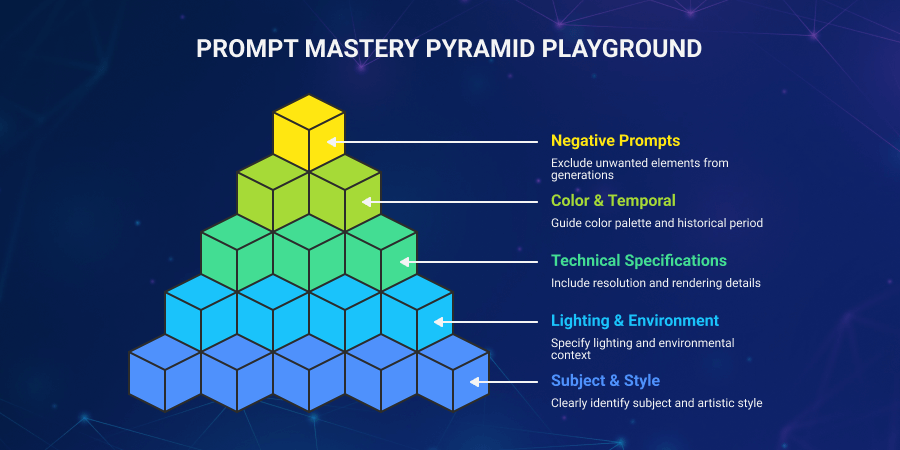
Effective prompt components include:
- Perspective instructions such as “wide-angle view,” “macro close-up,” or “bird’s-eye perspective”
- Environmental context that situates the subject within a specific setting or background
- Artistic style references mentioning specific movements, periods, or notable artists
- Technical specifications like “8K resolution,” “photorealistic rendering,” or “cinematic composition”
- Color palette guidance specifying dominant hues, color relationships, or overall tone
- Temporal references indicating historical period, futuristic setting, or specific era aesthetics
Structure your prompts logically from general concepts to specific details for optimal AI interpretation. Start with subject and style fundamentals before adding environmental context and technical specifications. Avoid ambiguous language that could lead to multiple possible interpretations by the AI system.
Maintain consistent terminology throughout your prompts for more predictable and reliable results. Specific terms like “photorealistic,” “stylized,” or “conceptual” carry distinct meanings within the system. Include emotional qualities when mood significantly impacts your creative vision. Descriptors like “peaceful,” “tense,” or “mysterious” guide the emotional atmosphere.
Develop personal prompt formulas that combine essential elements in a structured, repeatable pattern. A basic formula might follow: Subject + Style + Lighting + Environment + Technical specifications. Advanced prompts might incorporate camera settings, lens types, or specific rendering techniques.
Utilize negative prompts to exclude unwanted elements from appearing in your generations. Clearly specify what you do not want using phrases like “no text,” “no distorted proportions,” or “no blurry elements.” This helps the AI avoid common problems while focusing on your desired qualities.
Use Cases for Playground AI
Playground AI empowers creators across industries to generate stunning visuals quickly and efficiently. It simplifies design workflows, boosts marketing efforts, and enhances creative projects with AI-powered image generation. Below are key practical use cases where Playground AI shines.
1. Digital Marketing and Advertising
Create unique social media graphics and marketing visuals without needing costly custom design.
Overview:
Playground AI helps marketing teams produce eye-catching visuals rapidly to support campaigns and client presentations.
Industries Served:
E-commerce, digital marketing agencies, fashion brands, fitness, SaaS companies.
How It Works:
Users input product details or campaign concepts, and the AI generates multiple visual options aligned with brand identity.
Impact:
Speeds up content creation, enabling frequent posting and quick adaptation to marketing trends without heavy design budgets.
Real-World Example:
An online apparel store used Playground AI to create lifestyle imagery for social ads, boosting click-through rates by 35%.
2. Design and Creative Workflows
Accelerate concept development with AI-powered visualization for designers and creatives.
Overview:
Designers use Playground AI to explore ideas early, creating mood boards, patterns, and mockups before detailed design work.
Industries Served:
Graphic design, interior design, fashion, architecture, web design, packaging design.
How It Works:
Designers input themes or rough sketches; AI generates multiple iterations, enabling faster experimentation and client feedback.
Impact:
Reduces concept turnaround time, improves creative flexibility, and enhances client presentations with compelling visuals.
Real-World Example:
An architecture firm used Playground AI to visualize building concepts in different environments, speeding client approvals by 40%.
3. Content Creation
Enhance digital content with custom visuals that improve engagement and storytelling.
Overview:
Content creators use Playground AI to produce featured images, thumbnails, and thematic artwork that stand out online.
Industries Served:
Authors, bloggers, podcasters, YouTubers, online educators, newsletter publishers.
How It Works:
Creators input topic details or scripts; AI produces tailored images that complement the content’s theme and tone.
Impact:
Increases audience engagement and click rates with visually consistent and unique graphics.
Real-World Example:
A YouTube creator boosted video views by 20% after switching to AI-generated custom thumbnails.
4. Personal and Artistic Projects
Unlock creativity and overcome artistic blocks with AI-generated inspirations and personalized designs.
Overview:
Artists and hobbyists use Playground AI for idea generation, personalized cards, event invitations, and custom character art.
Industries Served:
Visual artists, gamers, travel enthusiasts, home decorators, personal journaling.
How It Works:
Users describe ideas or upload reference images; AI creates artistic visuals for personal projects or creative exploration.
Impact:
Stimulates creativity, speeds up project execution, and produces unique personalized artwork with minimal effort.
Real-World Example:
A hobbyist designed a series of personalized greeting cards with Playground AI, saving hours on manual illustration.
5. Business Applications
Support professional communication and presentations with custom AI-generated visuals.
Overview:
Businesses use Playground AI for product concept visuals, real estate staging images, marketing materials, and training graphics.
Industries Served:
Startups, real estate, hospitality, event planning, corporate training, non-profits.
How It Works:
Users input project requirements or concepts; AI generates tailored visuals for presentations, promotions, or educational use.
Impact:
Improves investor pitches, client engagement, and internal communication efficiency with compelling graphics.
Real-World Example:
A startup created investor pitch visuals using Playground AI, helping secure funding 30% faster.
6. Brand Identity Development
Create unique logos, mascots, and brand visuals to define or refresh brand identity quickly.
Overview:
Startups and small businesses use Playground AI to develop original branding assets without hiring expensive designers.
Industries Served:
Startups, small businesses, freelancers, marketing agencies.
How It Works:
Users input brand keywords, style preferences, or mood descriptions; AI generates multiple logo or mascot concepts.
Impact:
Speeds up brand creation, enabling faster market entry and consistent visual identity.
Real-World Example:
A freelance consultant generated multiple logo ideas with Playground AI and finalized a design within days, saving costs.
7. Advertising Campaign Ideation and A/B Testing
Produce multiple ad visuals to test messaging and styles before final campaign rollout.
Overview:
Marketing teams create diverse ad concepts to identify what resonates best with their audiences.
Industries Served:
Advertising agencies, retail, tech companies, consumer goods.
How It Works:
Users generate several variations of ad creatives by adjusting themes or colors; test across marketing channels.
Impact:
Reduces campaign risks and maximizes engagement by identifying winning visuals early.
Real-World Example:
A SaaS company created 10 ad variants in Playground AI, increasing click-through rates by 25% through A/B testing.
8. Rapid Prototyping for Product Design
Visualize new product ideas, packaging, or UI concepts without manual sketching.
Overview:
Product teams use AI-generated visuals to quickly explore and communicate design options.
Industries Served:
Consumer electronics, FMCG, software UI/UX, fashion accessories.
How It Works:
Users describe product features or upload rough ideas; AI creates visual prototypes to refine concepts.
Impact:
Speeds innovation cycles and reduces costs by minimizing early-stage physical prototypes.
Real-World Example:
A fashion accessory brand prototyped patterns and color schemes using Playground AI, speeding up design decisions.
9. Social Causes and Awareness Campaigns
Generate compelling imagery that emotionally connects audiences and amplifies social campaigns.
Overview:
NGOs and social enterprises use Playground AI to produce visuals enhancing storytelling and donor engagement.
Industries Served:
Non-profits, advocacy groups, environmental organizations.
How It Works:
Users input campaign messages or themes; AI creates impactful imagery supporting cause communication.
Impact:
Increases campaign reach and emotional resonance without large creative budgets.
Real-World Example:
An environmental NGO used AI-generated visuals for climate change campaigns, increasing social media shares by 40%.
10. Multilingual Visual Content Creation
Produce culturally relevant visuals for different language markets or global campaigns.
Overview:
Global marketers and content creators customize visuals to appeal to regional audiences by adjusting cultural elements.
Industries Served:
International brands, e-commerce, travel, education.
How It Works:
Users adapt input prompts to local languages and cultural contexts; AI tailors imagery accordingly.
Impact:
Boosts global engagement with visuals that resonate locally without costly manual redesigns.
Real-World Example:
A travel company created culturally specific destination images for five countries with Playground AI, improving campaign effectiveness.
Limitations of Using Playground AI
Despite impressive capabilities, Playground AI presents several important limitations users should consider before incorporating it into professional workflows. Resolution constraints affect the final output quality, particularly when using the free service tier. Standard free generations typically produce medium-resolution images unsuitable for large-format printing or professional publication.
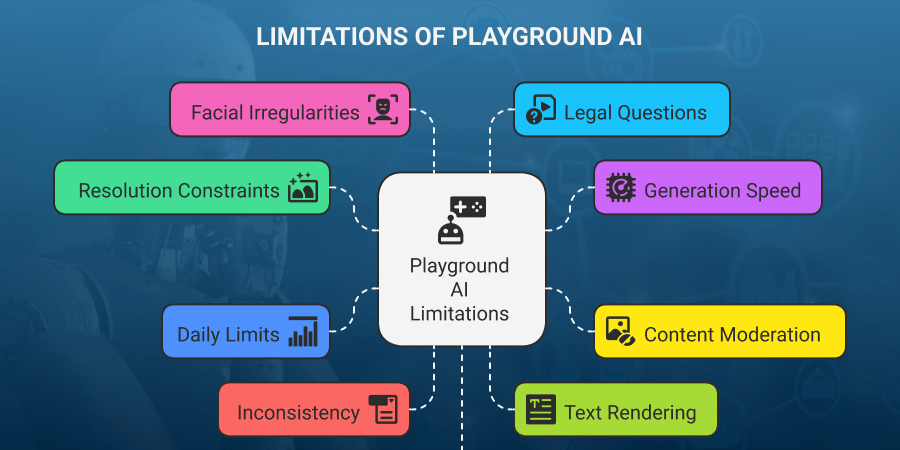
Significant limitations include:
- Variable generation speed depending on current server load and model complexity
- Content moderation restrictions that prevent creation of certain types of imagery
- Daily generation limits for free tier users that may restrict extensive projects
- Occasional inconsistency in image outputs even when using identical prompts
- Limited text rendering capabilities within generated images causing distortion
- Facial feature irregularities including asymmetry and proportion issues in portraits
- Evolving legal questions regarding copyright and ownership of AI-generated imagery
- Periodic technical interruptions including scheduled maintenance and server downtime
Conclusion
Playground AI represents a transformative tool for creative expression and visual content creation through accessible artificial intelligence. The platform effectively democratizes sophisticated image generation capabilities that previously required extensive technical knowledge or artistic training. Learning how to use Playground AI effectively opens remarkable possibilities for designers, marketers, and content creators seeking visual innovation.
The structured approach outlined in this guide provides a solid foundation for exploring the platform’s extensive capabilities. Starting with basic prompt construction and gradually advancing to more sophisticated techniques allows for progressive skill development. Regular experimentation with different models and settings builds valuable intuition for achieving specific visual outcomes.
While the platform’s limitations deserve consideration, they rarely outweigh the substantial benefits for most creative applications. Resolution constraints, occasional inconsistencies, and content restrictions represent manageable challenges rather than significant barriers. Most users quickly develop effective workflows that accommodate these limitations while maximizing creative potential.
The platform continues evolving with regular updates and new model integrations that expand its capabilities. This ongoing development ensures improved performance and expanded creative possibilities over time. Users who develop proficiency now position themselves advantageously for leveraging future enhancements and features.
Consider incorporating Playground AI into your creative workflow as a complementary tool rather than a complete replacement for traditional methods. The platform works best when combined with conventional design approaches and human creative judgment. This balanced integration yields the most impressive and distinctive visual results.
Frequently Asked Questions
Is Playground AI completely free to use?
Playground AI offers a free tier with limited daily generation credits and standard resolution outputs. Premium subscription options provide additional features including higher resolution outputs, increased generation limits, and priority processing. The free tier works well for casual users and experimentation, while professional applications typically benefit from premium features.
How can I improve the quality of images generated by Playground AI?
Improve image quality by crafting detailed, specific prompts that clearly describe desired elements. Experiment with different AI models as each excels at particular styles and subjects. Adjust settings like guidance scale and sampling steps to refine results. Consider using negative prompts to exclude unwanted elements from your generations.
Can I use Playground AI images commercially?
Most Playground AI images can be used commercially according to their terms of service. However, users should review the specific licensing terms which may change over time. Consider potential copyright implications when generating images based on existing intellectual property. For critical commercial projects, consult legal advice regarding AI-generated content usage rights.
How does Playground AI compare to other image generation tools?
Playground AI distinguishes itself through its intuitive interface and access to multiple AI models. Compared to Midjourney, it offers a more visual interface without requiring Discord interaction. Unlike DALL-E standalone, Playground AI provides access to multiple models including Stable Diffusion variations. The platform balances accessibility with powerful features suitable for both beginners and professionals.
Can Playground AI generate animations or videos?
Currently, Playground AI focuses primarily on static image generation rather than animation or video. The platform specializes in high-quality still images across various styles and formats. Users requiring animation typically export Playground AI images to dedicated animation software for further processing.
Shaif Azad
Related Post
Top 10 AI Development Companies in New Jersey for Business
Are you searching for the perfect AI development partner in New Jersey? Have you wondered which...
Top 10 AI Development Companies in New Hampshire
Are you watching New Hampshire’s tech landscape transform before your eyes? Your state is quietly becoming...
Top AI Companies in Nebraska Every Business Should Know
Are you a Nebraska business owner wondering how artificial intelligence could transform your operations? Picture this...


